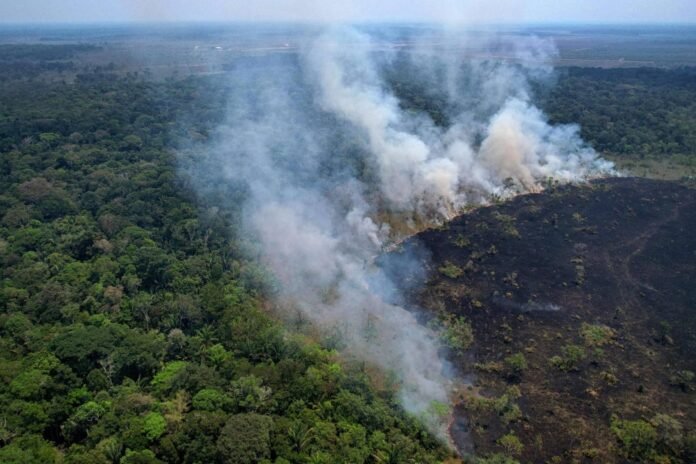On Monday, 13,489 forest fires were reported in the Brazilian Amazon in the first half of the year, the worst number in 20 years, satellite data showed.
The total is up more than 61% compared to the same period last year. Experts say the increase is the result of a historic drought that hit the world’s largest tropical rainforest last year.
Since Brazil’s National Institute for Space Research (INPE) began collecting data in 1998, there have only been two other years with more forest fires from January to June: 2003 (17,143) and 2004 (17,340).
The data is bad news for the government of President Luiz Inacio Lula da Silva, as the number of fires increases while deforestation in the Amazon – which helps reduce global warming by absorbing carbon dioxide – decreases.
According to INPE data, the area affected by deforestation has decreased by 42% between January 1 and June 21, compared to the same period in 2023.
Lula has pledged to end illegal deforestation in the Amazon by 2030, a practice that had dramatically worsened under his far-right predecessor Jair Bolsonaro.
According to Romulo Batista, spokesman for the Brazilian branch of Greenpeace, “climate change is contributing” to the increase in the number of forest fires.
Batista said most biomes, or separate natural regions, in Brazil are under pressure from a lack of precipitation.
“The environment is drier, which makes the vegetation drier and more vulnerable to fires,” he said.
But he said most wildfires were probably not started spontaneously, such as by lightning, but by human activity, particularly the use of agricultural fires.
Record set in Pantanal wetlands
Two other ecosystems south of the Amazon also saw record fires in the January-June period: the Pantanal, one of the world’s largest tropical wetlands, and the Cerrado savanna, which is mainly in Brazil.
In the Pantanal, home to millions of caimans, parrots, giant otters and the highest density of jaguars in the world, 3,538 forest fires were recorded in the first six months of 2024, an increase of more than 2,000% compared to last year.
The total is also 40% higher than in 2020, the record year in that region.
In June alone, 2,639 fires were detected, six times the highest number ever recorded. In recent days, residents of the Pantanal have seen red skies and clouds of smoke from the fires.
The situation is worrying because the peak of the forest fire season is normally in the second half of the year, especially September, when the weather is driest.
A state of emergency was declared last week in the state of Mato Grosso do Sul, home to much of the Pantanal, and authorities announced that firefighters from other regions would be deployed to help battle the flames.
The Cerrado, one of the three largest savannas on Earth, along with those of Africa and Australia, was hit by 13,229 fires from January to June, almost as many as the Amazon.
The Cerrado covers an area the size of France, Germany, Italy, Spain and Great Britain combined.



